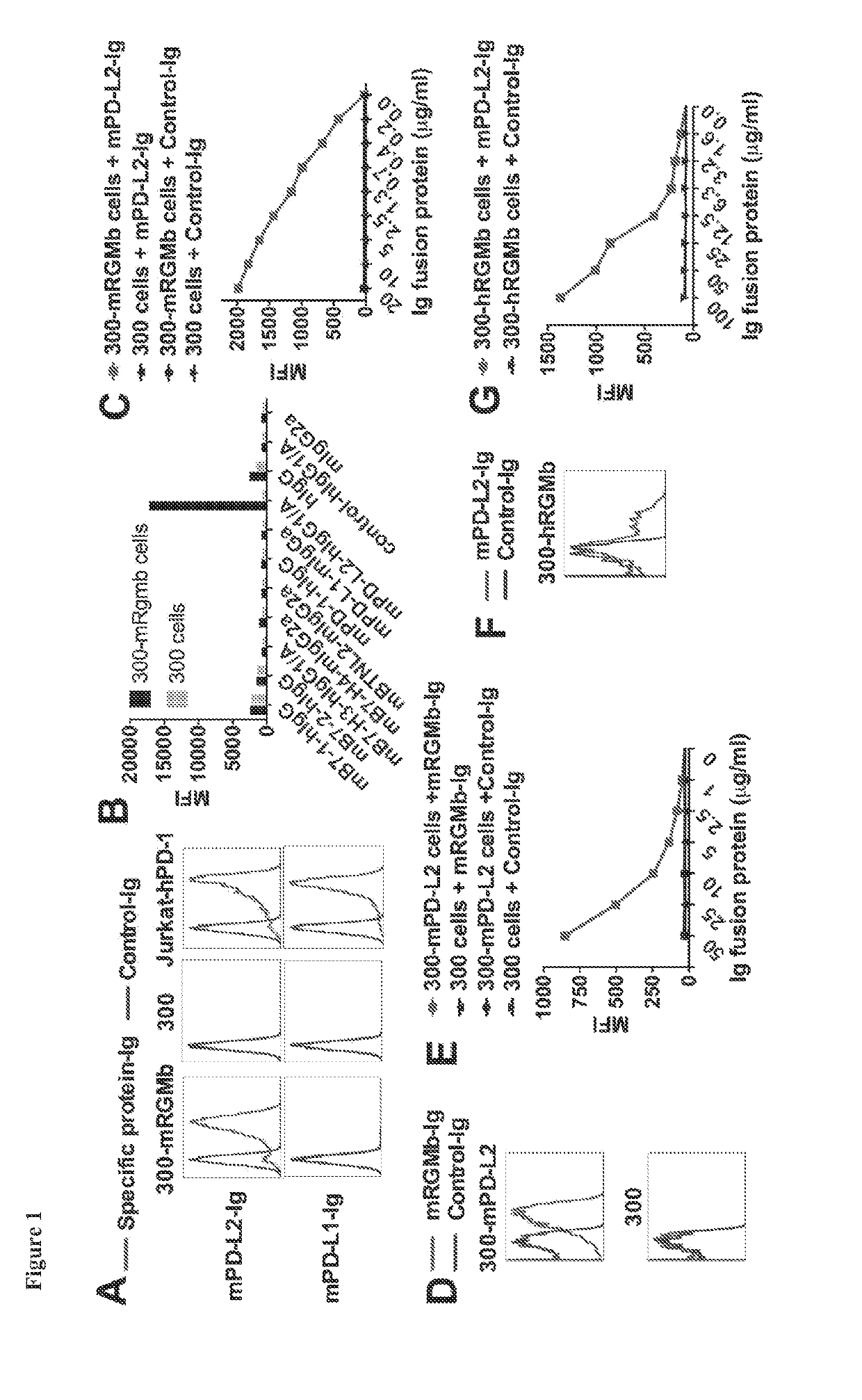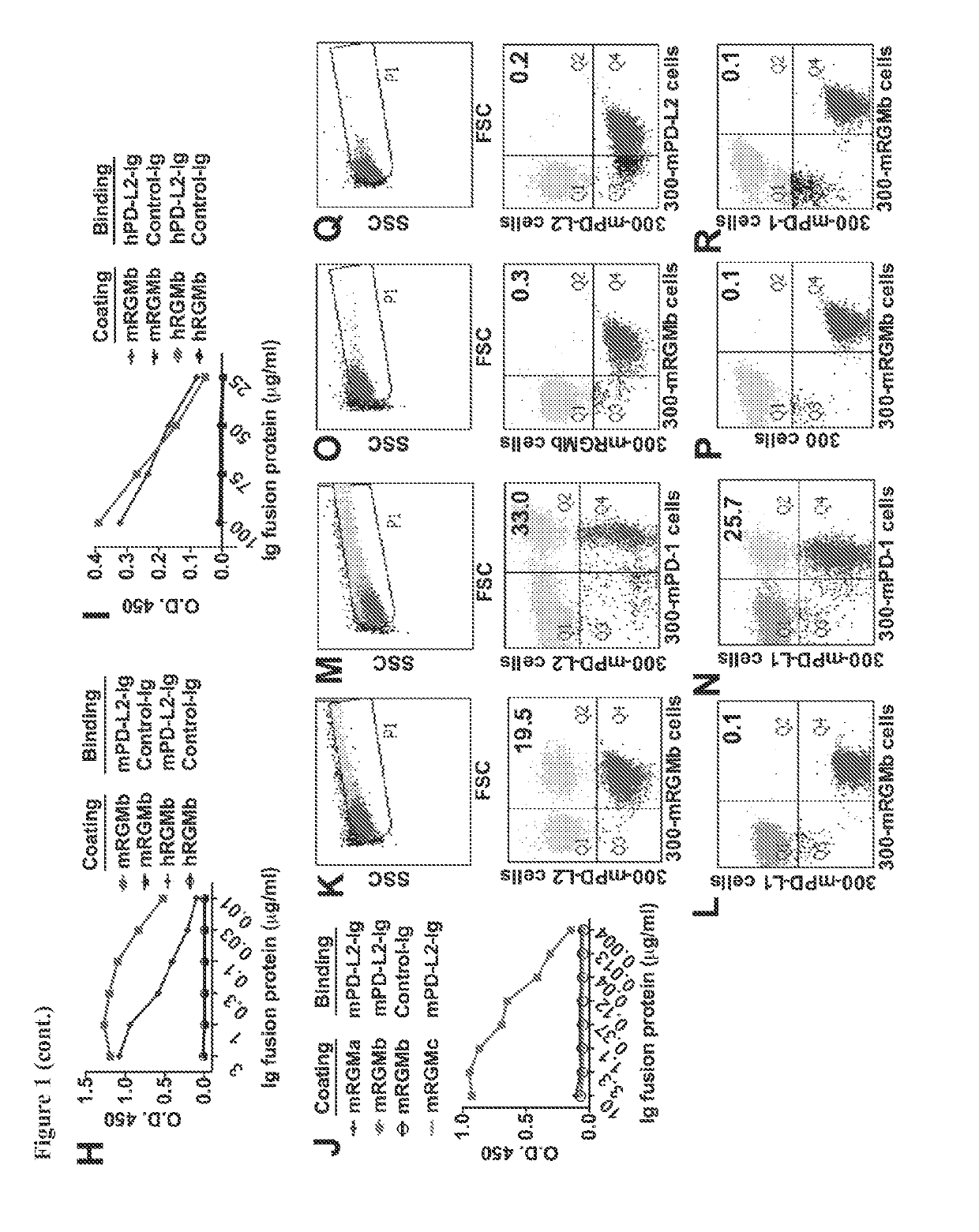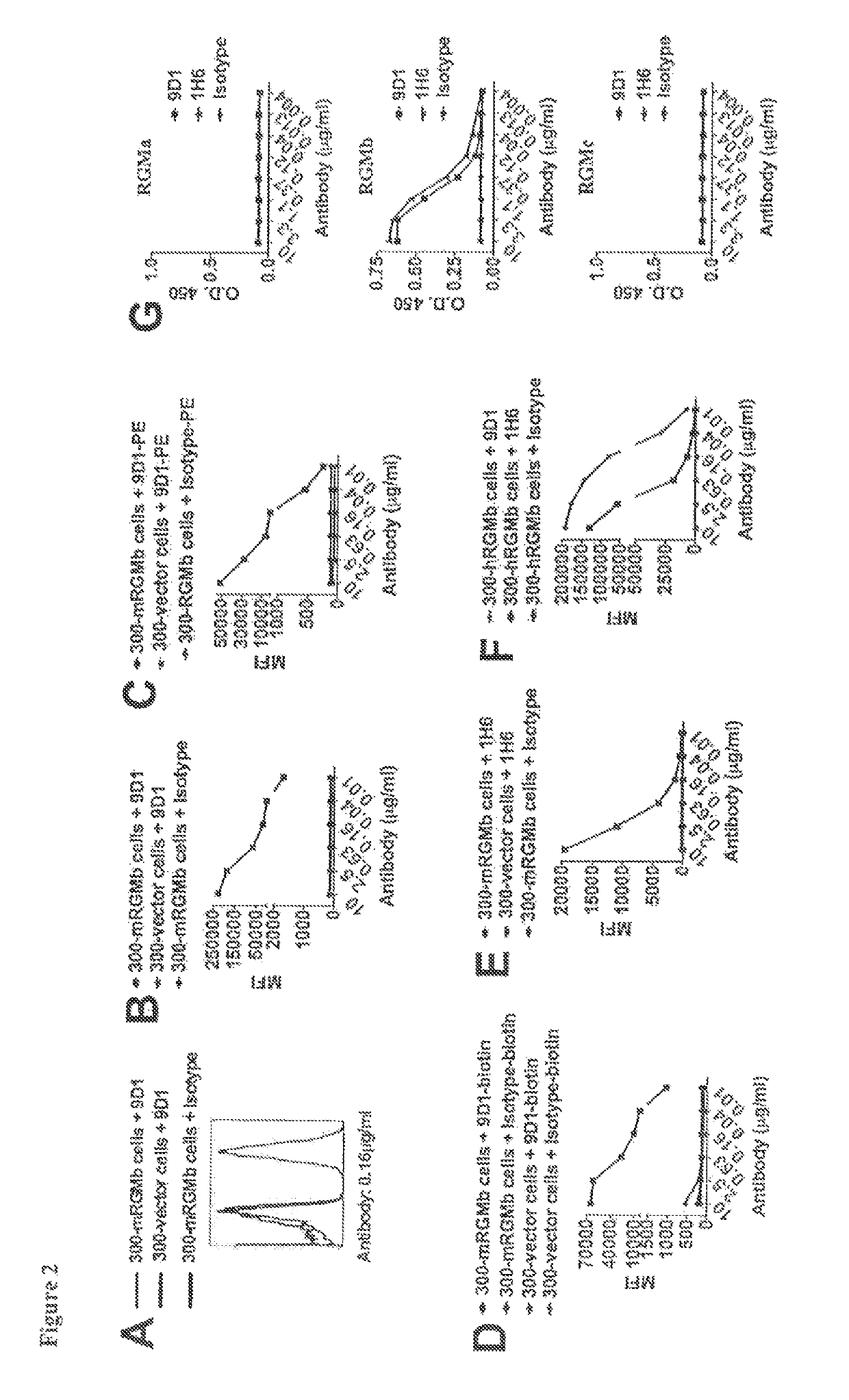Agents that modulate immune cell activation and methods of use thereof
a technology of immune cell activation and agents, applied in the field of agents that modulate immune cell activation, to achieve the effects of modulating signaling activity, downregulating pkc- phosphorylation, and upregulating pkc- phosphorylation
- Summary
- Abstract
- Description
- Claims
- Application Information
AI Technical Summary
Benefits of technology
Problems solved by technology
Method used
Image
Examples
example 1
Materials and Methods for Examples 2-12
[0305]A. Mice
[0306]Wild type (WT) BALB / cJ mice, BALB / cByJ mice and C57BL / 6 mice were purchased from the Jackson Laboratory. PD-L2 KO mice on BALB / c background have been described (Keir et al. (2008) Annu. Rev. Immunol. 26:677-704). OVA TCR-transgenic DO11.10 mice were used as donors of OVA-specific CD4+ T cells (Tsitoura el al. (1999) J. Immunol. 163:2592-2600). Age-matched female mice were used at 6-12 weeks. Animal
protocols were approved by The Animal Care and Use Committees at Boston Children's Hospital, the Dana-Farber Cancer Institute, and Harvard Medical School.
[0307]B. Cells and Culture Media
[0308]Mouse pre-B cell line 300 cells were transfected by electroporation with mRGMb or hRGMb cDNA in the pEFGF-Puro expression vector. Cells were selected in media containing puromycin, sorted, and subcloned. Cell-surface expression of mRGMb and hRGMb was verified by flow cytometry using an mRGMb polyclonal antibody (R&D) and an hRGMb mAb (R&D), res...
example 2
RGMb Binds to PD-L2, but not to PD-L1 or Other Related Molecules
[0359]RGMb, also known as DRAGON, is a member of the RGM family which consists of RGMa, RGMb and RGMc / hemojuvelin (Severyn et al. (2009) Biochem J. 422:393-403). RGMs are glycosylphosphatidylinositol (gpi)-anchored membrane proteins that bind bone morphogenic proteins (BMPs) and neogenin (Conrad et al. (2010) Mol. Cell Neurosci. 43:222-231). BMPs consist of a family with more than 20 members related to the transforming growth factor-β (TGF-β) family (Bragdon et al. (2011) Cell Signal. 23:609-620 and Yoshioka et al. (2012) Eur. J. Immunol. 42:749-759). RGMb directly binds to BMP-2 or BMP-4, which in turn bind to type I receptors (ALK1, ALK2, ALK3, and ALK6) and type II receptors (BMPRII, ActRIIa and ActRIIb) (Corradini et al. (2009) Cytokine Growth Factor Rev. 20:389-398 and Yoshioka et al. (2012) Eur. J. Immunol. 42:749-759). RGMs coordinate utilization of specific BMP receptors (Corradini et al. (2009) Cytokine Growth ...
example 3
Anti-RGMb Monoclonal Antibodies Bind to RGMb, but not to RGMa or RGMc
[0364]Flow cytometry analysis shows that the anti-mRGMb antibodies that were generated (e.g., clones 9D1, 1H6, 8B2, 9D3, 5G1, and 7A7) bind to mRGMb- or hRGMb-transfected 300 cells (see, for example, FIGS. 2A-2F). ELISA data show that anti-mRGMb antibodies bind to mRGMb, but not to mRGMa or mRGMc (FIG. 2G).
PUM
| Property | Measurement | Unit |
|---|---|---|
| pH | aaaaa | aaaaa |
| volume | aaaaa | aaaaa |
| flow rate | aaaaa | aaaaa |
Abstract
Description
Claims
Application Information
 Login to View More
Login to View More - R&D
- Intellectual Property
- Life Sciences
- Materials
- Tech Scout
- Unparalleled Data Quality
- Higher Quality Content
- 60% Fewer Hallucinations
Browse by: Latest US Patents, China's latest patents, Technical Efficacy Thesaurus, Application Domain, Technology Topic, Popular Technical Reports.
© 2025 PatSnap. All rights reserved.Legal|Privacy policy|Modern Slavery Act Transparency Statement|Sitemap|About US| Contact US: help@patsnap.com



